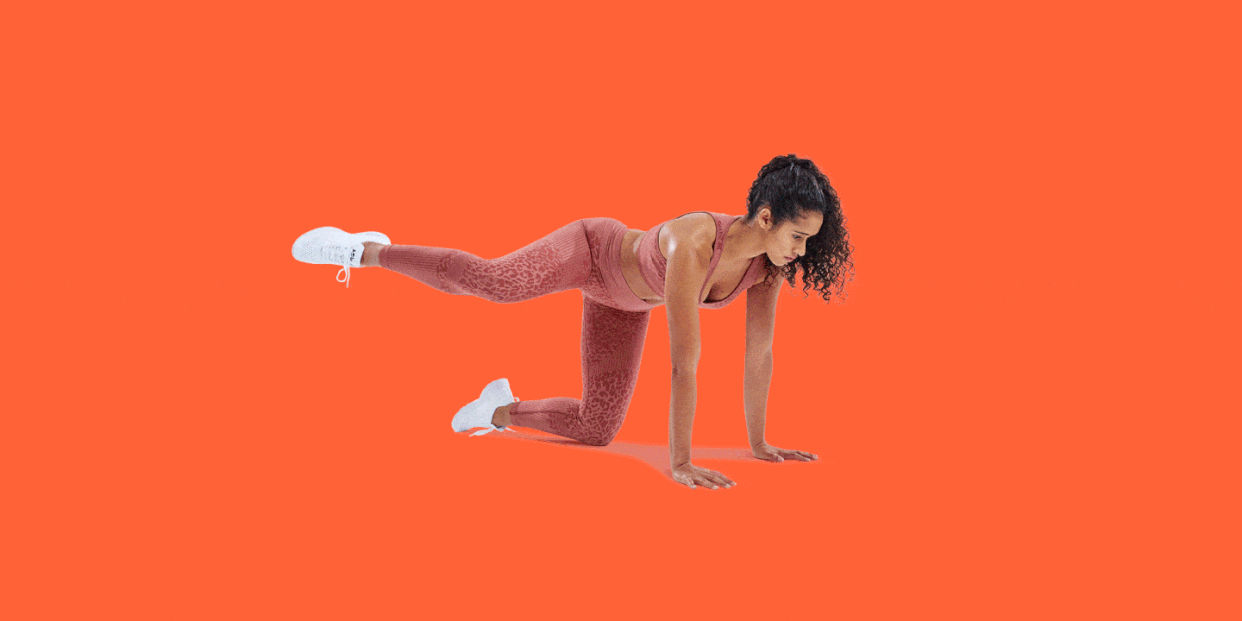The fire hydrant exercise works your glutes and core using just your bodyweight

You might chuckle at its name but the fire hydrant provides a glute workout that’s no joke. It’s an excellent accessory move for leg day, as it targets the hip abductors - muscles that move your leg away from the midline of your body – specifically, the gluteus medius and gluteus minimus, the harder-to-reach neighbours of the gluteus maximus, your largest glute muscle.
You might also spy it in both warm-ups and Pilates classes – both types of exercise laud its glute-activation benefits. Another bonus, the position also requires you to fire up your core to keep you stable and avoid lower back rotation. Win!
So, for all of you wondering, 'What is a fire hydrant?', sit tight – we're going to run you through the benefits of the exercise, what muscles it targets and how to nail it, every time.
6 fire hydrant benefits
Improves hip mobility
Improves lower-back stability
Engages hard-to-reach muscles
Warms up the hips
Activates glute muscles
Improves joint health
‘Done correctly, this exercise can help improve both hip mobility and lumbar [lower back] stability,’ says Emily Taylor, personal trainer at Fitness Lab. ‘It’s great for warming up the hips and activating the glutes before a workout.’
The move also requires movement in the transverse plane (rotation) which is often neglected in typical glute or lower body workouts.
‘Many of the exercises you do for your lower body, such as squats and deadlifts, occur in the sagittal plane [forwards and backwards]. Working across different planes of motion is key for joint health and overall agility,’ Taylor explains.
Avoid if: You have lower back pain. Try a banded clamshell instead: lie on your side with your legs bent at 90° and a resistance band around your thighs, then lift the top knee to open your legs.
Which muscles does a fire hydrant exercise use?
Hip abductors
Gluteus medius
Gluteus minimus
Glutes maximum
Core
Unlike squats, deadlifts and lunges – all exercises you can lift quite a heavy load while doing, the fire hydrants can cause some serious burn without any weight besides yours. There's the option to use ankle weights if you'd like to up the ante but don't be disheartened if your home gym equipment stash doesn't include any; the fire hydrant can sculpt and tone without any added weight whatsoever.
How to do the fire hydrant exercise
a) Start on all fours in a tabletop position, with your wrists under your shoulders and knees under your hips. Make sure your back is straight and your core is engaged.
b) With your weight distributed evenly between your hands, lift your right leg out to the side, keeping the knee bent at a right angle. ‘Think about presenting the outside of your right knee to the ceiling,’ Taylor suggests.
c) Hold for two seconds, then slowly lower the leg back down to the starting position.
The key? Make sure your body doesn’t rotate to complete the movement. ‘You should feel the muscles in the top of your hip tensing at the top of the move. Go as far as your mobility allows without allowing your lower back to rotate. You might have quite a small range of motion, to begin with – that’s normal,’ Taylor says. Keep firing up those hydrants to increase mobility. Bonus.
Fire hydrant exercise form mistakes to avoid
1.Twisting your lower back
‘The entire motion should begin and end with the hips – your shoulders shouldn’t rotate, your elbows shouldn’t bend and your lower back shouldn’t twist,’ Taylor says. To prevent movement elsewhere in the body, think about drawing your belly button in towards your spine to engage the core, she adds.
2. You're going too fast
‘You want to stick to a controlled tempo, rather than kicking the leg out and in with zero mind-muscle connection,’ Taylor says. And don’t forget that pause at the top.
Fire hydrant exercise alternatives
1.Clamshell
Lie on your side, with your hips and knees on top of each other while bending your knees toward your chest.
Keeping your feet together, lift your top knee toward the ceiling as high as you feel comfortable without rotating your low back.
Hold this position.
2. Donkey kick
3.
You Might Also Like


